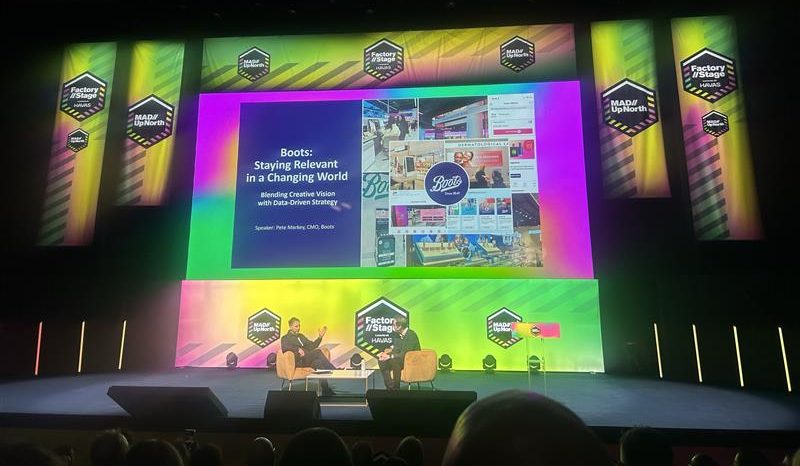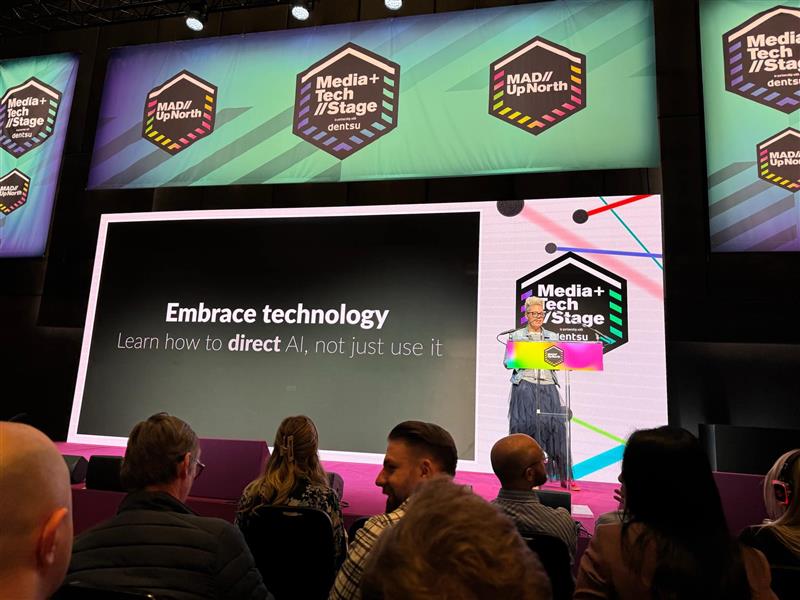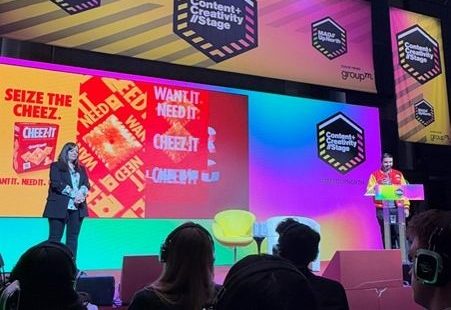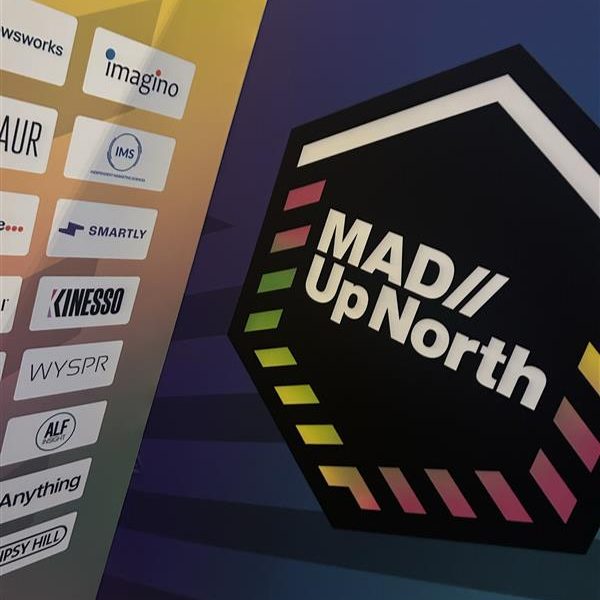MAD//UpNorth 2025: Key Takeaways from KINESSO
KINESSO recently attended the first ever MAD//UpNorth event in Manchester. Discover some of our highlights and key insights from across the two days.
Authored by Sophie Darling & Tyeish Liburd | 7th March 2025KINESSO recently attended MAD//Fest’s inaugural venture “UpNorth”. The two-day event was packed full of insightful talks, covering everything from brand authenticity to AI.
We heard from some of the North’s most iconic brands – Greggs, Yorkshire Tea, Jet2Holidays and more. Local legends also took to the stage to share their own insights and experiences with the marketing industry, including Andy Burnham, Gary Neville, Lucy Beaumont and Bez from the Happy Mondays.
Missed the action at MAD//UpNorth? Check out some of our favourite panels and insights from across the two days.
Day 1:
How to build a superhuman brand – Yorkshire Tea
In an industry increasingly dominated by automation and AI, Yorkshire Tea are embracing the power of a human approach.
Dom Dwight (Strategy & Innovation Director) explained how they have tapped into real-life experiences where you might have a cup of tea. Think weddings, engagements, or even funerals. But they’ve taken this one step further, treating well-known celebrities like everyday people in their adverts to reinforce that ‘human’ element.
They also utilised their values to build relationships with customers, leaning into their personable Northern identity to establish themselves as a reliable and trustworthy brand.
Key takeaway: If there’s an opportunity for brands to be more human, they should take it.

Sync or Sink: Only brands that collaborate with culture will survive – Jet2 and Wavemaker
In this joint panel with Emma Slater and Jet2 Marketing Director, Gavin Forth, we heard about the importance of ‘Cultural Collaboration’ – where brand’s align with their target audience’s passions and identities to stay relevant.
In Jet2’s case, they spotted an opportunity to establish themselves with a younger audience. After all, 50% of their TikTok followers were under 24 years old. They made themselves relevant through culture, launching VIBE by Jet2Holidays on Love Island. This helped them gain social currency with the show’s younger audience, and resulted in a huge success for the Leeds-based airline.
Key takeaway: Look for ways to adapt and evolve, while still being authentic.
Boots: staying relevant in a changing world
In this interview with Boots’ Chief Marketing Officer, Pete Markey, we learned about the process of keeping a 176-year-old brand relevant. Boots is one of the few brands that can stay with you through all periods of life. But they needed to refresh their offerings to avoid ending up in a stagnant position.
After marketing the idea to their finance team, they launched and invested in their advantage card scheme to boost brand loyalty and deepen their understanding of customer personalisation.
Today, Boots have 17 million advantage card holders, and their next focus is on greater personalisation and acceleration of ordering.
Key takeaway: Sometimes you need to promote your marketing efforts internally to ensure you’re speaking the same language of growth.

Day 2:
Creativity & AI - Vodafone
AI, creativity and content creation is a topic we’re constantly discussing and finetuning at KINESSO. So, this talk with Sabrina Godden was a must attend for us.
Sabrina focused on how invaluable human creativity is – flagging the alarming stat that creativity decreases from 90% at age 5 to 2% at age 35. It’s important we don’t lose this 2% to AI.
Instead of using AI for the sake of it, we should shift our focus to where it could be most effective. We can use it to scale content and ideate, but with a human touch:
- Be critical of the output
- Use human judgement to test and learn
- Layer with our own human stories.
Key takeaway: It’s time to direct AI – not just use it – to elevate our own creativity.

The Experience Equation - EssenceMediacom North and Choreograph
Paul Cooper, Katy Woodward and Louis Georgiou gave an insightful presentation exploring how brands can reshape and enhance customer journeys.
An emphasis was placed on non-verbal cues, and how brands can use these customer insights to implement solutions. For example, if you’ve noticed a few customers dropping off at the checkout stage, perhaps examine your payment options – could you offer more flexible payment methods?
They also asserted that producing good content and uploading it at the right time is everything.
Key takeaway: Brand experience is key to customer engagement.
Launch It. Love It. Cheez-It: Bringing An Iconic $1BN US Brand To The UK - Kellanova
Rui Friasand and Rebecca Worthington discussed how they successfully launched famous US snack brand, Cheez-It, in the UK.
Introducing a US brand to an audience with zero awareness wasn’t going to be easy, but they took on the challenge with a location-centric, customer led approach. This included:
- Aligning the product and packaging to the UK market
- Hosting sample tours across the country
- Making products unmissable in store
- Adding products to meal deal packages.
These efforts resulted in £10.4m value sales, 47% awareness among customers, 8.9% penetration and 25.8% repeat rate for purchases.
Key takeaway: Brands must engage with local audiences and adapt their offering to succeed in new markets.

Wrap-up
So, what are some of the key themes to take away from MAD//UpNorth 2025?
Throughout both days, authenticity was a consistent call-out for brand success. From Yorkshire Tea and Jet2holidays to Greggs and Gymshark, brands are being recognised for their human touch and relatability.
There’s also a focus on relevancy, especially in relation to younger generations. From a consumer point of view, brands are tapping into their Gen Z audiences by refreshing their product offerings and tapping into cultural moments. But businesses are also looking inwards to focus on how they can champion their younger talent.
Finally, it’s clear that the marketing funnel has shifted, and we need to be dialling into the brand experience at different touchpoints. We need to move away from in store vs digital siloes, to create a consistent identity across the customer journey.
